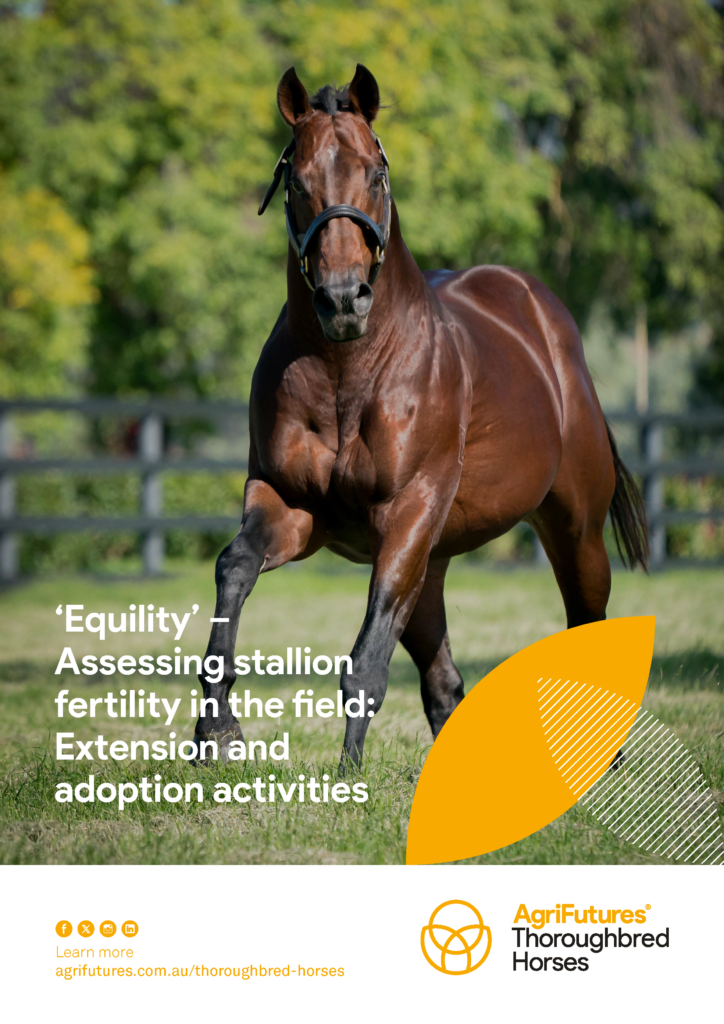Project overview: A strategy to increase demand for retired Thoroughbreds in Australia
The Thoroughbred industry in Australia is the second largest in the world, both in terms of breeding and the number of races held. The industry...
 THOROUGHBRED HORSES
THOROUGHBRED HORSES 
5 pages
Published: 5 Dec 2024
Author(s): Roisin Griffin, Zamira Gibb
Download report PDF
DownloadFertility varies significantly between thoroughbred stallions, and the time delay in pregnancy diagnosis – 14 days between breeding and knowing the outcome – limits the ability of stud managers to make timely decisions. Given some stallions cover more than 200 mares in a short window, the ability to accurately assess stallion fertility is critical to industry productivity and animal welfare.
To tackle this challenge, University of Newcastle researchers developed a device to measure sperm metabolism in post-breeding dismount semen samples, known as ‘Equility’. The device offers a potential solution for more accurate fertility prediction.
Building on the device’s development, this follow-up project involved testing its practicality and accuracy in the field. Trials revealed that while Equility could predict fertility when applied to individual stallions, inconsistent sample volumes, especially following premature stallion dismount, led to misclassification of pregnancy outcomes. The safety risks when collecting samples during dismount and the inability to routinely cross-cover mares also emerged as key limitations.
If adopted, Equility could become a valuable tool for pre-season thoroughbred stallion evaluations following semen collection, or for artificial insemination in other breeds of horse and cattle, improving breeding efficiency across equine species and other animals. Additionally, further research into why stallions dismount mares prematurely – which leads to lower fertility – may help improve reproductive outcomes in these natural breeding settings, refining fertility management practices for thoroughbred breeding operations.